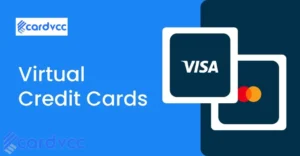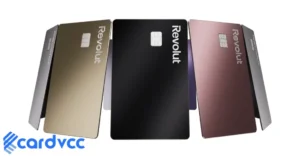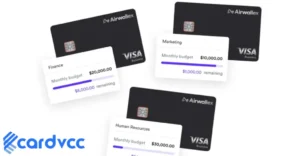To dispute a charge on your debit card, contact your bank immediately. Provide details of the transaction and explain the issue.

Disputing a charge on your debit card is crucial if you notice an unauthorized or incorrect transaction. Acting swiftly can increase your chances of resolving the issue effectively. Start by gathering all relevant information about the disputed transaction, including dates, amounts, and merchant details.
Then, reach out to your bank’s customer service department through their official phone number or online portal. Clear communication is key; explain your situation concisely and provide all necessary documentation. The bank will guide you through the dispute process, which may involve filling out a formal dispute form. Prompt action and detailed information can help resolve the issue efficiently.
Introduction To Charge Disputes
Dealing with unwanted charges on your debit card can be stressful. However, understanding how to dispute these charges can save you time and money. This guide will help you learn the basics of charge disputes and how to tackle them effectively.
What Is A Charge Dispute?
A charge dispute occurs when you question a charge on your debit card. You believe the charge is incorrect or unauthorized. This process allows you to challenge that charge with your bank.
Common Reasons For Disputes
There are several common reasons why you might dispute a charge:
- Unauthorized Transactions: Someone used your card without permission.
- Billing Errors: You were charged the wrong amount.
- Duplicate Charges: You were charged twice for the same item.
- Services Not Rendered: You paid for a service you never received.
- Defective Products: You received a damaged or faulty product.
Understanding these reasons can help you identify when to dispute a charge. Each reason has specific steps to follow for a successful dispute.
Initial Steps To Take
Disputing a charge on your debit card can be confusing. Follow these initial steps to make the process easier.
Review Your Transaction
First, review your transaction details. Make sure the charge is incorrect. Sometimes, charges can be from familiar merchants with different names. Look at the date, amount, and merchant name. Double-check your receipts and past transactions. This will help you identify any errors.
Gather Necessary Information
Next, gather all the necessary information. This includes your debit card number, the date of the transaction, the amount charged, and the merchant’s name. Having this information will make the dispute process smoother.
| Information Needed | Details |
|---|---|
| Debit Card Number | The total amount of the charge |
| Date of Transaction | When the charge occurred |
| Amount Charged | Total amount of the charge |
| Merchant Name | Name of the business |
Keep this information handy. You might need it when talking to your bank or the merchant.
Contacting Your Bank
Disputing a charge on your debit card can seem daunting. But contacting your bank is the first crucial step. They are there to help you resolve any unauthorized transactions.
Customer Service Channels
Different banks offer various customer service channels to report issues.
- Phone Support: Call your bank’s customer service number. This is usually found on the back of your debit card.
- Email: Send an email to your bank’s support team. Make sure to include all necessary details.
- Online Chat: Some banks have online chat options. This can be found on their website or mobile app.
- Branch Visit: Visit your local bank branch for face-to-face assistance.
Information To Provide
When contacting your bank, be ready to provide the following information:
| Information Type | Details |
|---|---|
| Account Details | Your account number and debit card number |
| Transaction Details | Date, amount, and merchant of the disputed charge |
| Personal Information | Your full name and contact information |
| Reason for Dispute | Explain why you believe the charge is incorrect |
Providing this information helps speed up the resolution process. Always keep a record of your communication with the bank.
Filing A Dispute
Disputing a charge on your debit card can be simple. Follow these steps to get your money back. You can file a dispute online, by phone, or in person.
Online Dispute Form
Many banks offer an online dispute form. To use this option:
- Log in to your bank account online.
- Navigate to the “Dispute a Charge” section.
- Fill out the online form with the required details.
- Submit the form and wait for confirmation.
Using the online form is quick and easy. Make sure to provide all necessary information.
Phone And In-person Options
If you prefer, you can dispute a charge by phone. Follow these steps:
- Call your bank’s customer service number.
- Provide your account information and details about the charge.
- Request to file a dispute.
Filing a dispute in person is also an option. Visit your local bank branch and speak with a representative.
- Bring your debit card and a photo ID.
- Explain the issue to the representative.
- Fill out any necessary forms provided by the bank.
Using phone or in-person options allows you to ask questions directly. Choose the method that suits you best.
Providing Evidence
When disputing a charge on your debit card, providing evidence is crucial. It helps your bank or card issuer understand your claim. Clear and organized evidence strengthens your case.
Receipts And Statements
Gather all receipts and statements related to the disputed charge. This includes receipts from stores or online purchases. Bank statements showing the transaction are also important. These documents prove your purchase history.
Organize these documents in a clear order. Use a table if necessary:
| Date | Vendor | Amount |
|---|---|---|
| 01/15/2023 | Online Store | $50.00 |
| 01/20/2023 | Grocery Store | $30.00 |
List the disputed transactions separately. Make it easy for the bank to find.
Communication Records
Keep communication records with the vendor. This includes emails, chat logs, and call logs. These records show your attempt to resolve the issue.
- Email exchanges
- Chat transcripts
- Phone call logs
Highlight important details in these records. Use bold text to emphasize key points. For example:
Provide dates and times of communications. This adds credibility to your claim.
By following these steps, you can strengthen your dispute. Organized and clear evidence is key.

Can Virtual Credit Cards Shield You from Online Scammers?
Online shopping is convenient but risky. Scammers are everywhere on the internet. Protecting your financial information is important. Virtual credit cards can help. But can they shield you from online scammers?
What Are Virtual Credit Cards?
Virtual credit cards are digital versions of your real credit card. They have a unique number, expiration date, and CVV. You can use them for online transactions just like a physical card.
How Do Virtual Credit Cards Work?
Virtual credit cards work by creating a temporary card number. This number links to your actual credit card. You can set limits on how much can be spent. You can also set an expiration date.
Benefits of Using Virtual Credit Cards
Virtual credit cards offer many benefits. Here are some of the key advantages:
- Enhanced Security: Virtual cards use unique numbers. These numbers are not the same as your real card.
- Spending Limits: You can set spending limits. This helps control your budget.
- Expiration Dates: Virtual cards can have short expiration dates. This reduces the risk of long-term fraud.
- Easy Creation: You can create and use them instantly.
How Virtual Credit Cards Protect You from Scammers
Virtual credit cards can shield you from online scammers in several ways:
- Unique Numbers: Each virtual card has a unique number. If a scammer gets this number, they can’t use your real card.
- Limited Use: Virtual cards can be set for one-time use. This means that once used, they become invalid.
- Controlled Spending: You can set how much can be spent. This limits the damage if a scammer tries to use it.
- Immediate Deactivation: You can deactivate a virtual card instantly. This stops any unauthorized use.
Steps to Create a Virtual Credit Card
Creating a virtual credit card is easy. Follow these steps:
- Join a Virtual Payment Application: Sign up for a service like Cardvcc.
- Link Your Real Credit Card: Connect your real card to the service.
- Create a Virtual Card: Generate a virtual card number.
- Set Limits: Set spending limits and expiration dates.
- Use the Virtual Card: Use the virtual card number for online transactions.
Understanding The Timeline
Disputing a charge on your debit card can seem confusing. Understanding the timeline helps make the process clear. You’ll know what to expect and when. This section breaks down the key periods and actions needed.
Bank Investigation Period
The bank usually starts its investigation quickly. Most banks take about 10 business days. Some banks might take longer, up to 45 days. During this period, they will review your claim. They check transaction details and contact the merchant.
Here is a quick overview:
| Bank | Investigation Period |
|---|---|
| Bank A | 10 business days |
| Bank B | 30 business days |
| Bank C | 45 business days |
Follow-up Actions
After the investigation, the bank takes action. They might refund the charge or deny your claim. If denied, you can appeal. To appeal, provide more evidence. Follow these steps:
- Gather receipts and emails.
- Write a clear explanation.
- Submit the appeal to your bank.
Be sure to follow up regularly. Keep notes of all communications. This helps track the progress and ensures a swift resolution.
Possible Outcomes
Disputing a charge on your debit card can feel daunting. Understanding the possible outcomes can ease your mind. Here are the potential results you may face when disputing a charge.
Charge Reversal
If your dispute is successful, you will see a charge reversal. This means the amount in question gets credited back to your account. The bank will notify you via email or mail. Keep an eye on your account to confirm the reversal.
Here are the steps your bank may take:
- Investigate your claim
- Contact the merchant
- Review evidence
Successful disputes mean you get your money back. Make sure you provide all the necessary information to support your claim.
Denial Of Dispute
Your dispute may get denied if the bank finds no error. You will receive a notice explaining the reason for the denial. Common reasons include:
- Insufficient evidence
- Transaction matches your history
- Merchant provided valid proof
To avoid denial, ensure your claim is strong. Gather all possible evidence before submitting your dispute. A well-documented claim increases your chances of success.
Preventing Future Disputes
Preventing future disputes on your debit card is crucial. It ensures your financial security and peace of mind. By taking proactive measures, you can avoid unnecessary stress. This section will guide you on how to monitor your account and use alerts to prevent future disputes.
Monitoring Account Activity
Regularly checking your account activity is essential. It helps you spot any unauthorized transactions quickly. Make it a habit to review your bank statements weekly. This can be done via your bank’s website or mobile app. Look for any unfamiliar charges or discrepancies.
- Check your account frequently.
- Review each transaction carefully.
- Report any suspicious activity immediately.
Using Alerts And Notifications
Setting up alerts and notifications can save you from potential disputes. Most banks offer this feature for free. You can receive alerts for every transaction made with your card. These alerts can come via email, SMS, or push notifications.
| Alert Type | Benefit |
|---|---|
| Email Alerts | Receive detailed transaction reports in your inbox. |
| SMS Alerts | Get instant notifications on your phone. |
| Push Notifications | Stay updated with real-time alerts on your mobile app. |
To enable alerts, log into your bank’s online portal. Navigate to the settings or notifications section. Choose your preferred alert types and save the changes. Ensure that your contact information is up to date.
- Log into your bank’s online portal.
- Go to the notifications section.
- Select your preferred alert types.
- Save the settings.
- Update your contact information.
By monitoring your account and using alerts, you can prevent future disputes. It keeps you informed and in control of your finances.
Legal Rights And Protections
Understanding your legal rights and protections is crucial when disputing a charge on your debit card. This knowledge empowers you to take the right steps. Read on to learn about the laws and when to seek legal help.
Consumer Protection Laws
Several consumer protection laws safeguard your rights. These laws ensure you can dispute unauthorized charges.
- Electronic Fund Transfer Act (EFTA): This law protects you from unauthorized transactions. You must report the error within 60 days.
- Fair Credit Billing Act (FCBA): While mainly for credit cards, it sometimes applies to debit cards too. It limits your liability for fraudulent charges.
Knowing these laws helps you act quickly. Always keep records and follow the guidelines.
When To Seek Legal Help
Sometimes, you may need legal help to resolve disputes. It’s important to know when to reach out to a lawyer.
- If the bank refuses your claim, consult a lawyer.
- If the disputed amount is large, legal help is advisable.
- If you face repeated unauthorized charges, seek legal advice.
Legal experts can guide you through complex cases. They ensure your rights are protected and help recover your funds.

Frequently Asked Questions
Can I Dispute A Debit Card Charge That I Willingly Paid For?
Yes, you can dispute a debit card charge you willingly paid for if it was unauthorized or fraudulent. Contact your bank immediately.
How To Dispute A Debit Card Transaction?
Contact your bank immediately. Provide transaction details. Fill out a dispute form. Submit supporting documents. Monitor for updates.
What Is The Easiest Way To Dispute A Charge?
The easiest way to dispute a charge is to contact your bank or credit card issuer directly. Provide details of the transaction and your reasons for disputing it. You can usually do this via phone, online banking, or a mobile app.
What Happens To The Merchant When You Dispute A Debit Charge?
The merchant’s bank investigates the disputed charge. Funds may be temporarily held or reversed from the merchant’s account.
Conclusion
Disputing a charge on your debit card is straightforward with the right steps. Always keep detailed records and contact your bank promptly. This ensures a swift resolution. Protect your finances by staying vigilant and proactive. By following these guidelines, you can effectively manage and resolve any unauthorized transactions.
Read More- Buy PayPal VCC and PayPal Verification Instruction







